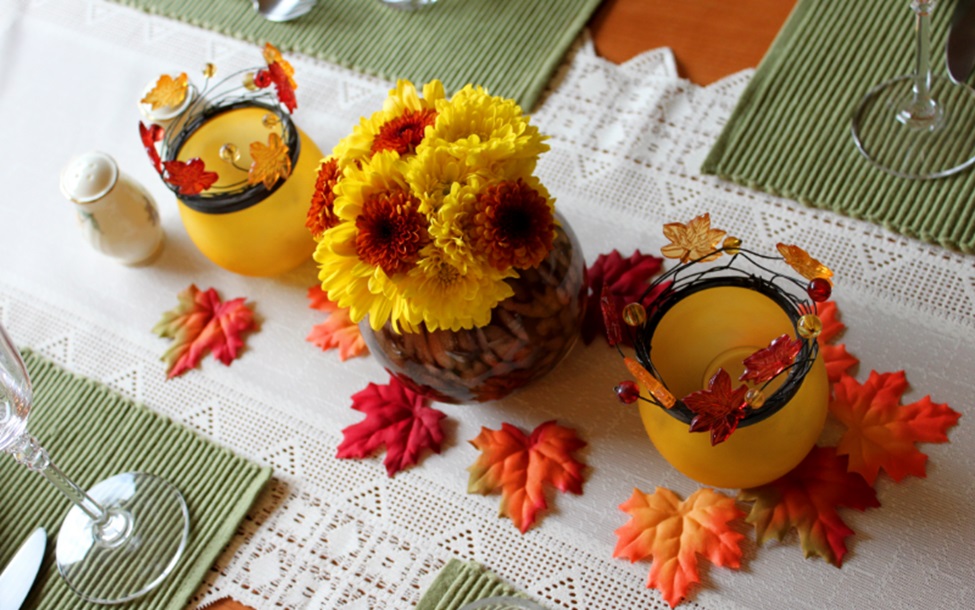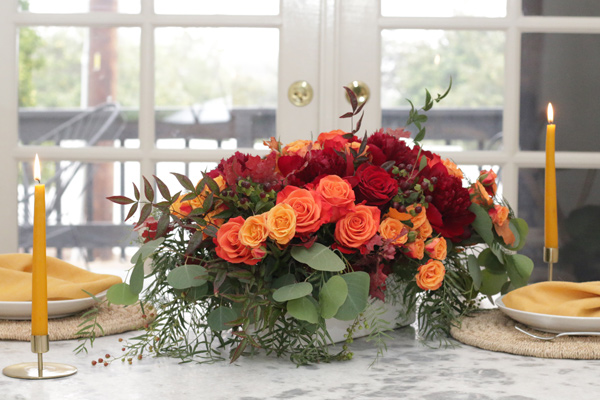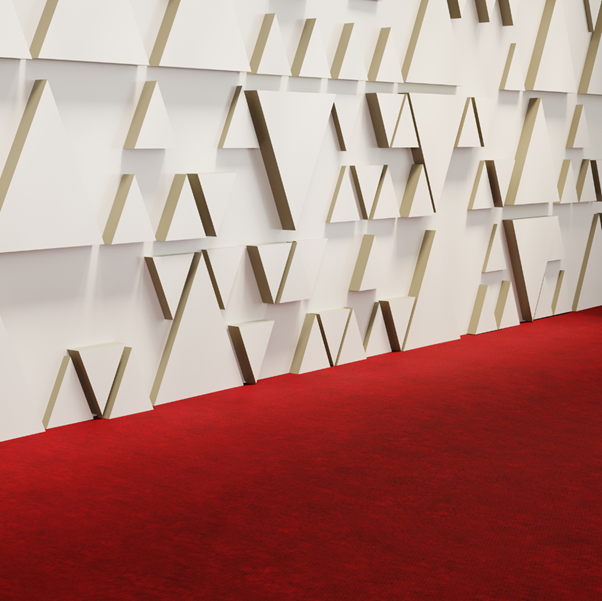
Creating a cohesive look for an event or dinner party involves coordinating various decorative elements. One key element is matching floral centrepieces with table flower arrangements. Done well, this combination enhances the aesthetic appeal of your tables and ties together the overall theme. Here’s a guide to help you achieve harmony between your floral centrepieces and table flower arrangements.
Consider the Event Theme and Colour Palette
Start by reflecting on the theme of your event. Whether it’s a formal dinner, wedding, or casual gathering, the type of flowers you select should align with the event’s tone. A wedding may call for elegant roses or peonies, while a casual lunch might look better with wildflowers or daisies. The colour palette should also complement the overall theme. For example, if your event’s colours are soft pastels, ensure your floral centrepieces and flower arrangements for the table are in similar hues. Matching or coordinating the colours ensures the flowers enhance rather than clash with the décor.
Choose a Unifying Floral Style
Floral centrepieces and table flower arrangements should share a similar style to maintain a cohesive appearance. If you’re aiming for a modern aesthetic, you might prefer clean, minimalist arrangements with one or two types of flowers. On the other hand, a more romantic style might feature fuller, overflowing designs with various blooms. Keep in mind the textures and sizes of the flowers as well. Mixing styles can be visually distracting, so aim for a unifying approach to achieve an elegant flow across all tables.
Use Similar or Complementary Flowers

Matching floral centrepieces with table flower arrangements can mean something other than using the same flowers. Incorporating complementary flowers is a great way to add visual interest without losing cohesion. For instance, you might have large hydrangeas in your centrepieces and use smaller, more delicate flowers like baby’s breath or sweet peas for the table arrangements. This adds variety while maintaining a balanced look. To create harmony, the trick is to ensure a connection between the floral centrepieces and the table flower arrangement.
Scale Your Arrangements Appropriately
Size matters when it comes to matching floral centrepieces with table arrangements. Floral centrepieces tend to be the focal point, but they shouldn’t overpower the entire table. Large centrepieces might work well for grand tables but choose proportionate sizes for smaller, intimate settings to maintain balance. For more extended tables, you can also scatter smaller floral arrangements along the length of the table to complement the centrepiece without making it feel overwhelming. A well-balanced mix of centrepiece size and smaller arrangements will keep your tables looking refined.
Keep the Table Layout in Mind
The layout of your table will significantly influence your choice of flower arrangements. For example, round tables typically suit one large floral centrepiece, while longer tables benefit from several smaller flower arrangements spaced evenly along the length. Ensure your floral arrangement works with the table’s shape and size to avoid overcrowding or leaving too much empty space. The floral design should enhance the table without interfering with guests’ comfort or ability to engage in conversation.
Match the Containers and Vases
Your choice of containers or vases also plays a crucial role in the overall cohesion of your floral centrepieces and table flower arrangements. For a unified look, stick to one style of vase or container, whether glass, ceramic, or metal. If you want to mix up the containers, ensure they are within the same material family or colour scheme. Consistent vases help tie together your floral displays and add polish to your table décor.
Balance Fragrance with Practicality
While a floral centrepiece might be stunning, overly fragrant blooms can overwhelm guests, especially on the dining table. When selecting flowers for your table arrangements, consider using flowers with a subtle fragrance to avoid overpowering the space. Lavender, eucalyptus, or roses provide a gentle scent without overwhelming diners. Save the stronger-scented flowers for displays that aren’t directly on the table. Balancing fragrance with practicality ensures the table looks and feels pleasant without compromising the dining experience.
Consider Seasonal Flowers
Another way to match your floral centrepieces and table arrangements is to choose flowers in season. Seasonal flowers tend to look fresher and are often more budget-friendly. For instance, tulips and daffodils work beautifully for spring events, while chrysanthemums and roses are better suited for autumn gatherings. Using seasonal blooms also allows you to naturally align your floral choices with the time of year, bringing a cohesive and organic feel to your décor.
Incorporate Greenery
Greenery plays an important role in tying together floral centrepieces and table arrangements. Incorporating leaves, ferns, or eucalyptus can help balance bright flowers while maintaining an elegant and natural look. You can also use greenery to add dimension and texture to your table flower arrangement. Just be careful not to overwhelm the flowers—greenery should serve as an accent rather than the main feature.
Pay Attention to Lighting
Your event’s lighting will affect how your floral centrepieces and table arrangements are perceived. Suppose you’re using candles or dim lighting. Light-coloured flowers like whites, yellows, or soft pastels will reflect the light beautifully. Conversely, bold, darker colours like deep reds or purples can add drama in well-lit settings. Matching your flower colours with the lighting ensures they stand out as intended, adding depth and dimension to your tablescape.
Conclusion
Creating harmony between your floral centrepieces and table flower arrangements requires a thoughtful approach. By considering your event’s theme, choosing complementary flowers, and balancing size and style, you can design cohesive table settings that enhance the overall ambience.
For more information, contact JM Flower today.





